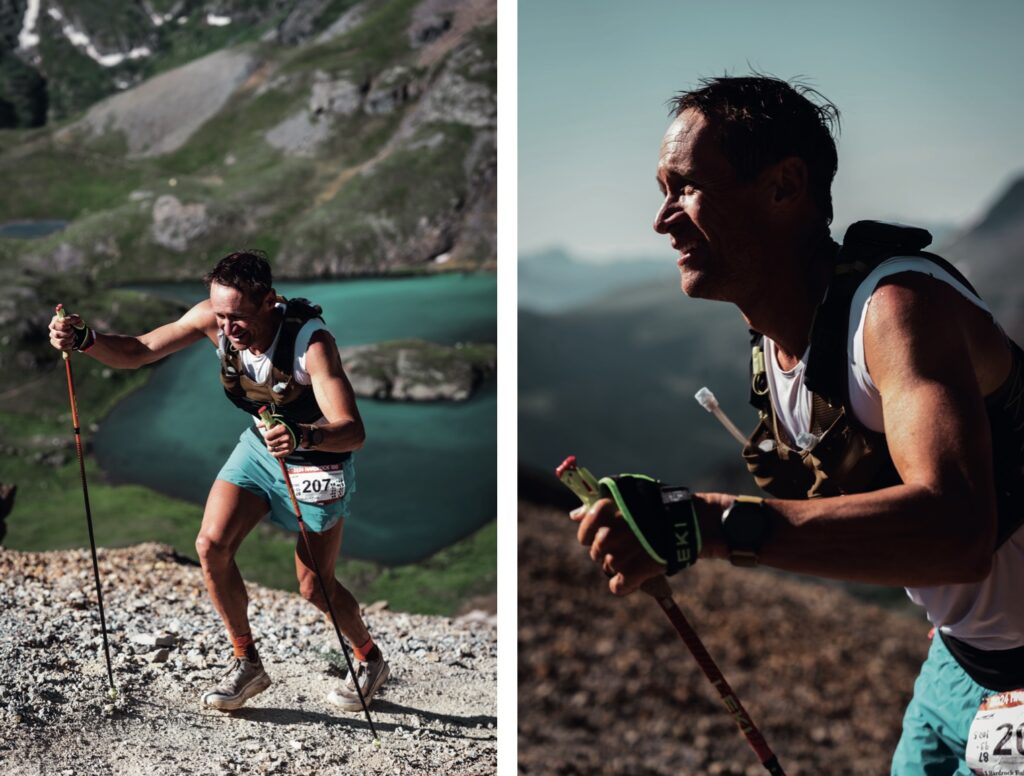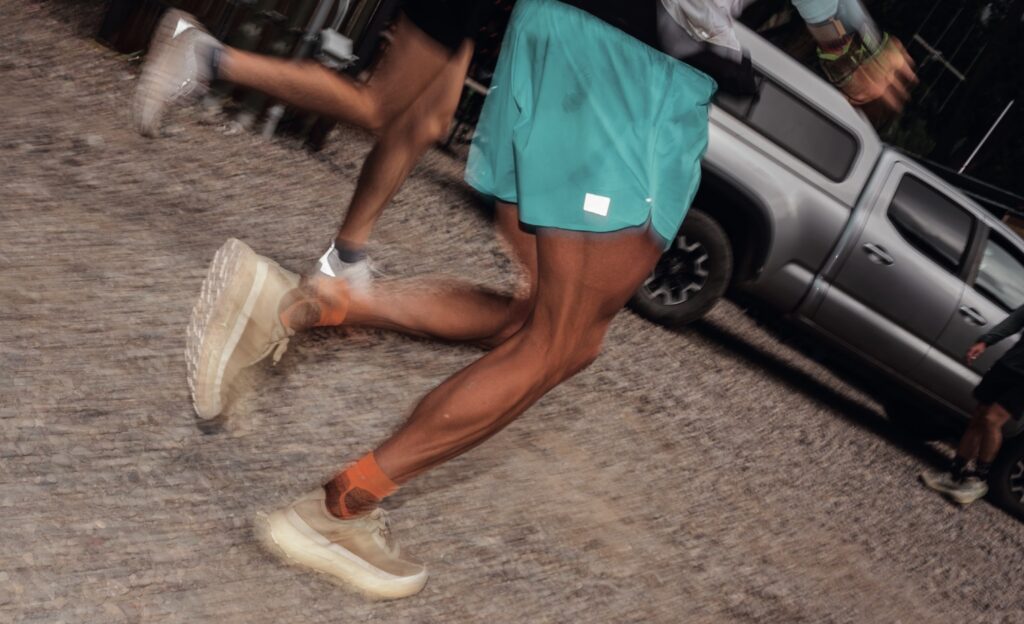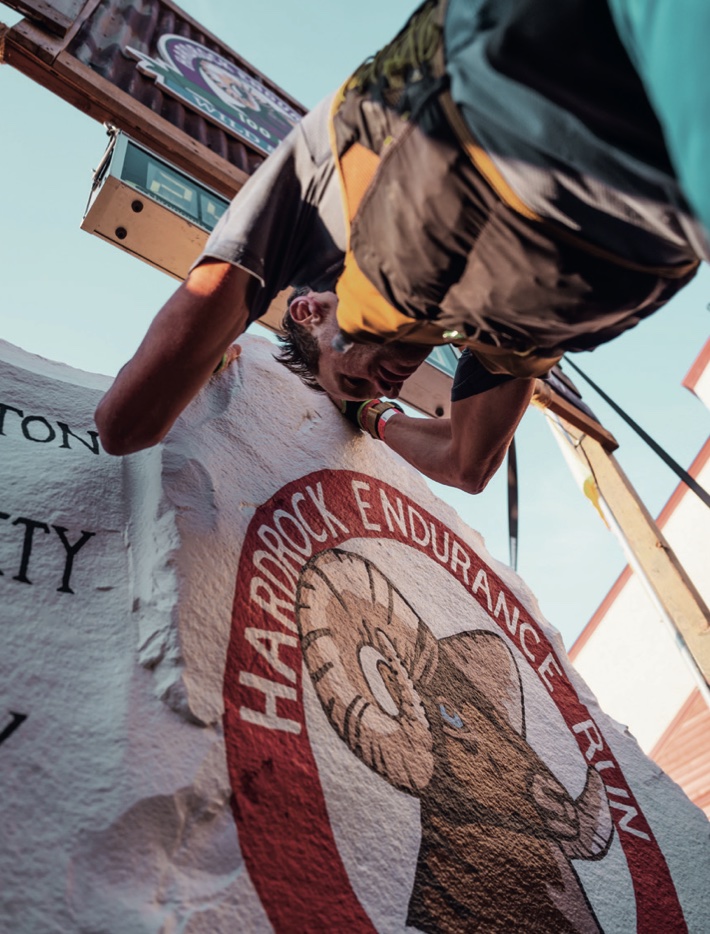Words by Like the Wind – Photography supplied by norda
The year 2010 was pretty much as eventful as any other. There were natural disasters, moments of social unrest and the emergence of exciting new technology. And in the midst of all the upheaval and chaos, the world of trail running also experienced some disturbances. This is the story of how that world changed and what that has meant for one athlete in particular.

The Ultra Trail du Mont Blanc is undoubtedly a blue ribbon mountain race. Following a well-established hiking route that snakes its way around the Mont Blanc massif in the French Alps, the race as we know it was launched in 2003. Seven hundred and twenty-two runners set off from the centre of Chamonix, France to cover the 154km (95 mile) route. Only 67 finished the inaugural event.
By 2010, the race was well established with fields at capacity and the great-and-the-good of the trail running world making the pilgrimage to race one another through France, Switzerland and Italy. But that year, the race would face a challenge so significant that it threatened its future.
A few hours after the start of the 7th edition of the race, as the athletes headed up into the mountains, the rain – which had been dampening bodies and spirits for the past few days – intensified.
Just before the leaders of the race – Kilian Jornet, Miguel Heras and Geoff Roes amongst them – reached the village of Les Contamines, around 30km into the race, the announcement that everyone had been fearing was made – “Le UTMB est fini”. The race was over, having been called off due to landslides on the course (which were arguably made more dangerous by the mysterious disappearance of course markings). Athletes were directed down to the closest aid stations and villages, whilst the organisers rushed to find ways to get them back to their accommodation.
The following day the decision was taken to restart the race on a shortened course. But everyone involved suddenly understood that mother nature, who provided such a stunning environment through which to run, could also bring the race to its knees.
Almost 9,500km away on the west coast of the US and just three months after the debacle in France, an athlete stepped up to the starting line of a 50 mile race in San Francisco, CA. This athlete was a self-confessed ‘roadie’ who’d harboured ambitions of qualifying for the US Olympic trials after a career racing on the track and tarmac. But just over seven hours later, in fifth place, Jason Schlarb crossed the finish line and knew that his life would never be the same again.
“I have yet to enter a road race since,” says Schlarb with a wry grin. “That was it. That was it. That was it. And it’s not like I’m stubbornly opposed to road racing. But my attentions have since been on the mountains and trails, from vertical kilometres to stage racing.”
Talking to Jason Schlarb today, it is clear there has been an evolution of the man over the past 14 years. The backdrop as he tells his story is a wooden cabin surrounded by pine trees, deep in the San Juan Mountains in Durango, CO where he lives with his wife and son and their dog.
And after finishing third at the Hardrock 100 just a few weeks ago, Schlarb doesn’t only look like the consummate trail runner. He is achieving the results as well. But the route to get here has been up and down to say the least.
Schlarb was a team sports athlete at school. In fact it felt like his destiny: “I grew up as a soccer player. I did that at a high school that was State Champions in Oregon.”
Schlarb’s father was a soccer coach and there was a plan that he would gain a place at university to continue to play the game. But after a while Schlarb “kind of got burned out”. As the training, travelling and competing took its toll, Schlarb says he “saw these guys in my high school, running around the forest, having fun.” The footballer was drawn to the idea that running had way less bureaucracy or politics around team selection.
All of this meant that a year and a half before he graduated from high school, Schlarb switched to cross country. And carried on with running when he entered Montana State University. Still, getting on a team at university was not a given. Schlarb recalls, “I was actually told by the coach, ‘Don’t show up. Your times aren’t anywhere close to what they need to be to join a top 25 Division One Cross Country Program.’ I showed up anyways at practice. And the coach said, ‘Well, if you can hang on [to the group] in this tempo workout that we’re going to do tomorrow, then you can keep coming.’”
Schlarb hung on. And ended up running steeplechase, indoor- and outdoor-track and cross country for the university team for the entire five years he was there. After graduation, the running continued. Schlarb joined the US Airforce where he kept training and competing in races against Army and Navy running teams as well as athletes from military teams from around the world.
All this time, Schlarb saw himself as a track and road athlete. Even when a friend introduced him to the Hardrock 100 Mile race in 2006, Schlarb was not all that interested. “I went to school in Montana. I loved the trails,” says Schlarb. “But I loved competition. And at the time I looked into the sport, in 2006, 2007, 2008, and I just thought, ‘Well, it looks like it’s a whole bunch of old guys’ – like I am right now – ‘Just jogging around in the woods.’ I wanted to keep competing.”
That mindset stuck with Schlarb until 2010. That was when the friend who had brought the Hardrock 100 – and indeed the whole concept of ultra-distance trail races – to Schlarb’s attention, told him that the North Face Endurance Challenge 50 Miler in San Francisco, CA had a first prize of $10,000. Schlarb knew that with prize money like that, there would be competition. So he entered. And never looked back.
Schlarb’s opinion of trail running in the early 2000s is an interesting jumping-off point for a discussion about how the sport has changed in the following decade and a half. And Schlarb acknowledges that he might be partly responsible for some of the changes.
“When I came into the sport,” says Schlarb, “I was on the other side of the culture of trail running, [which was about being] so grounded, purely for the adventure, small community focused and not for money. Not a young person’s sport.”
Schlarb says that he was coming into the sport as a road- racing athlete, with a mindset that had been honed by track and field coaches at university and later in the Airforce.
“I was kind of the disturbance,” says Schlarb.
The insinuation here is not that trail runners in the 2000s and 2010s were not competitive. Far from it. After all, Kilian Jornet – with his affinity for the mountains and fitness honed skiing uphill – was already starting to show what he would go on to become: essentially unbeatable (Schlarb experienced Jornet’s capacity first hand when they were joint winners at the 2016 Hardrock 100 race). But it is arguable that the reason many trail runners got into the sport in the first place was a love of the mountains and exploring their limits, rather than to make a living.
And whilst Schlarb readily admits that as his career has continued, he has become much more entwined in the spirit and community of trail running, the competitive drive is in no way diminished. As evidenced by the enthusiasm that Schlarb has for his partnership with norda™. “The relationship with norda™ started in a way that couldn’t be more authentic and genuine,” Schlarb explains.
Nick Martire, the co-founder of norda™ was a trail runner and a fan of the sport. Martire had followed Schlarb’s career and during the period that he was building the business, Schlarb was without a sponsor.
“I heard about norda™,” says Schlarb, “and I was interested in the brand. I saw that they were only in trail running. And that they were dedicated to staying pure to trail running.” Schlarb liked that norda™ wasn’t part of a huge corporation and when he contacted Martire to ask if he could try a pair of the norda™ 001 model, they were sent with no strings attached.
Over time the relationship between Schlarb and the team at norda™ deepened until the brand was in a position to offer the athlete not just a place in the trail team but the position of team manager. And not only that. With a background in engineering, Schlarb is able to articulate what he needs from a shoe as well as what he feels, running in prototypes, in a way that most athletes can’t. That is a gift that makes Schlarb even more valuable to the norda™ team.
All of this is perhaps why Jason Schlarb and norda™ are such a good fit. Schlarb knows that everyone at norda™ is determined to stay true to the culture of the sport and build world class products. And at the same time, the team embraces competition to the fullest extent. “The 001 and 002 models,” says Schlarb, “really nail the requirements of great durability, performance, shape and materials.”
And it is the upcoming 005 model that Schlarb believes takes norda™ shoes to the next level. “The unique thing about the 005,” explains Schlarb, “Is that norda™ has created something that the market really doesn’t have. And that’s an extremely light shoe that can still perform and have the cushioning to be a trail racer. To get a shoe that is lightweight and that has the kind of cushioning that I can wear at Hardrock 100 is mind blowing.”
Which brings us full circle, back to the race in the San Juan mountains. After 24h48m of racing, Jason Schlarb crossed the finish line of the 2024 Hardrock 100 in third place. After a knee injury in 2021 that side-lined him for three years, many commentators had written Schlarb off. After stomach issues that plagued him in his come-back races as well as in this race, few expected Schlarb to be duelling with the leaders. Perhaps more than anything, after turning 46 years old, many fans wondered if Schlarb’s glory days were behind him now that trail running is no longer an ‘old person’s sport’.
But Schlarb is not a man who takes much notice of nay- sayers. For as long as he has been running, he has forged his own path. And now, with norda™ backing him, he is doing the same again. So keep an eye out. And don’t be surprised – there are exciting times ahead.

Founded in Montreal, Canada in 2020, and headquartered in the mountains of the Eastern Townships of Quebec, norda run, inc. is a privately held footwear and apparel company. norda is inspired by Canada’s toughest conditions, and is committed to craftsmanship in creating the highest performance products. The brand’s mission is to empower all runners to achieve their peak potential, and to provide the best performance footwear, while leaving the lightest footprint possible. Through science and cutting-edge technology, norda has created the world’s first seamless (trail) running shoe with bio-based Dyneema®, the world’s strongest and lightest fiber. This achievement breaks historical boundaries in the footwear industry, and proves that the highest performance, durability and sustainability are achievable together.
For more information, visit: nordarun.com IG: @nordarun



